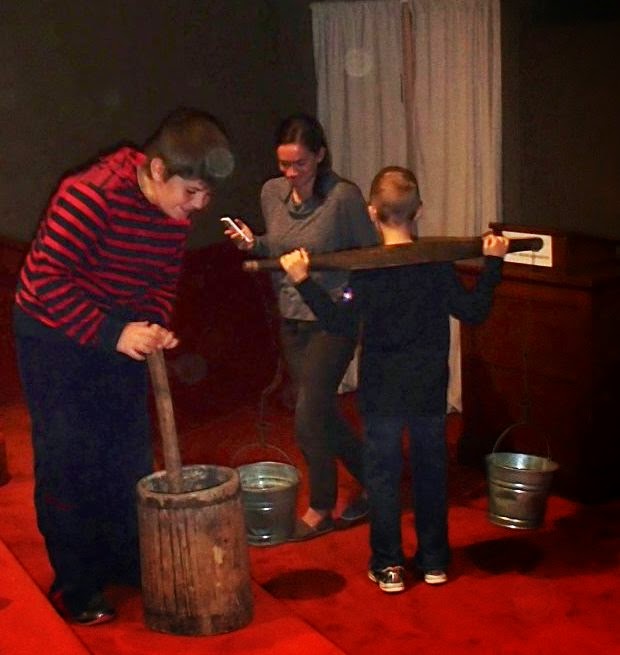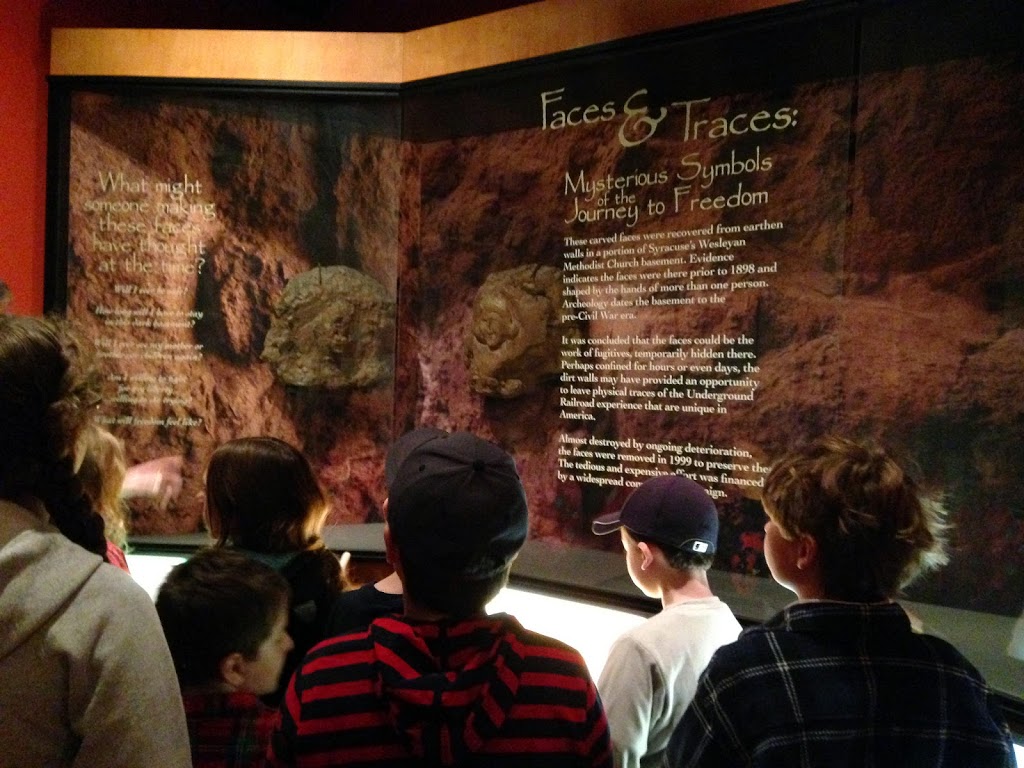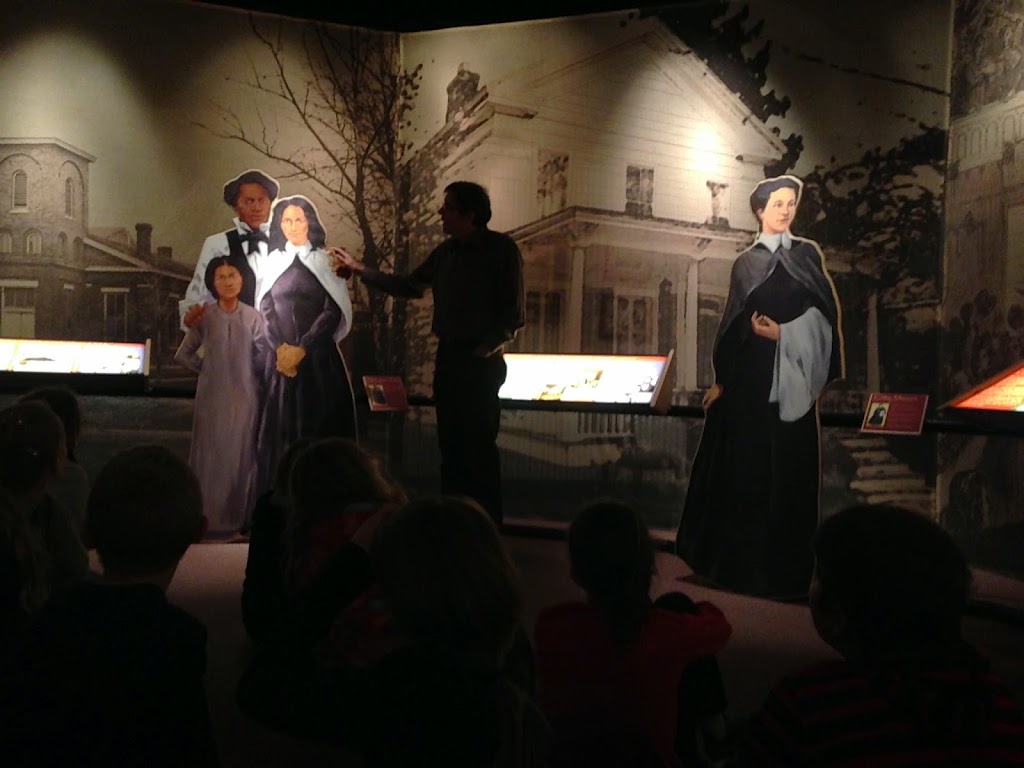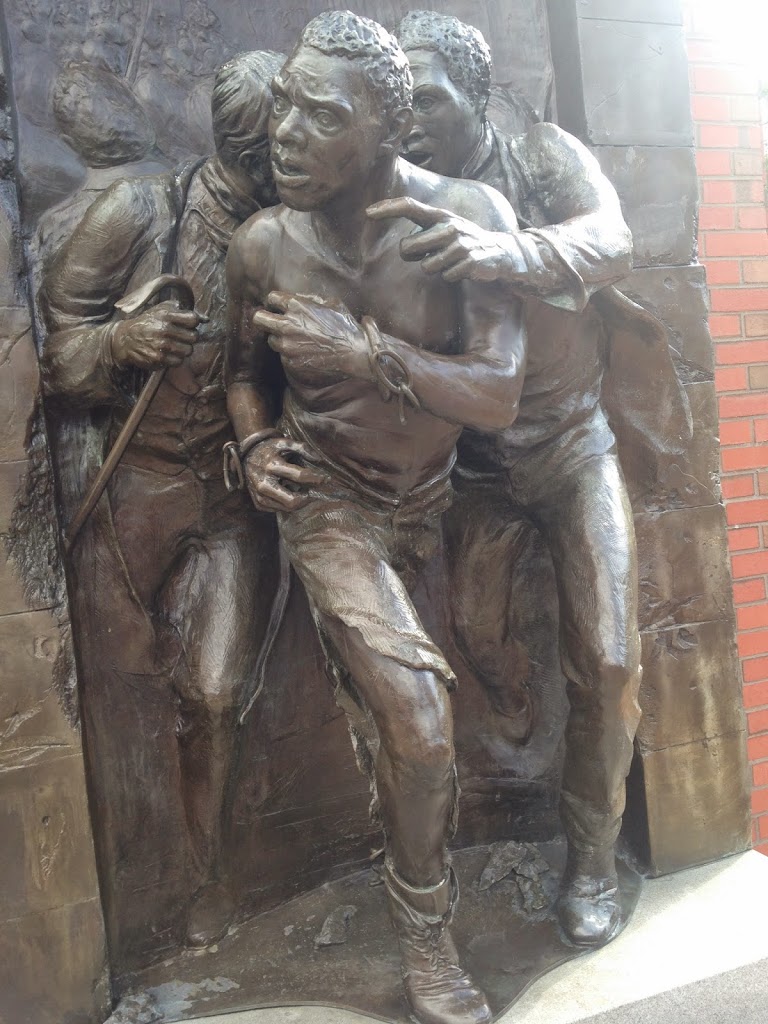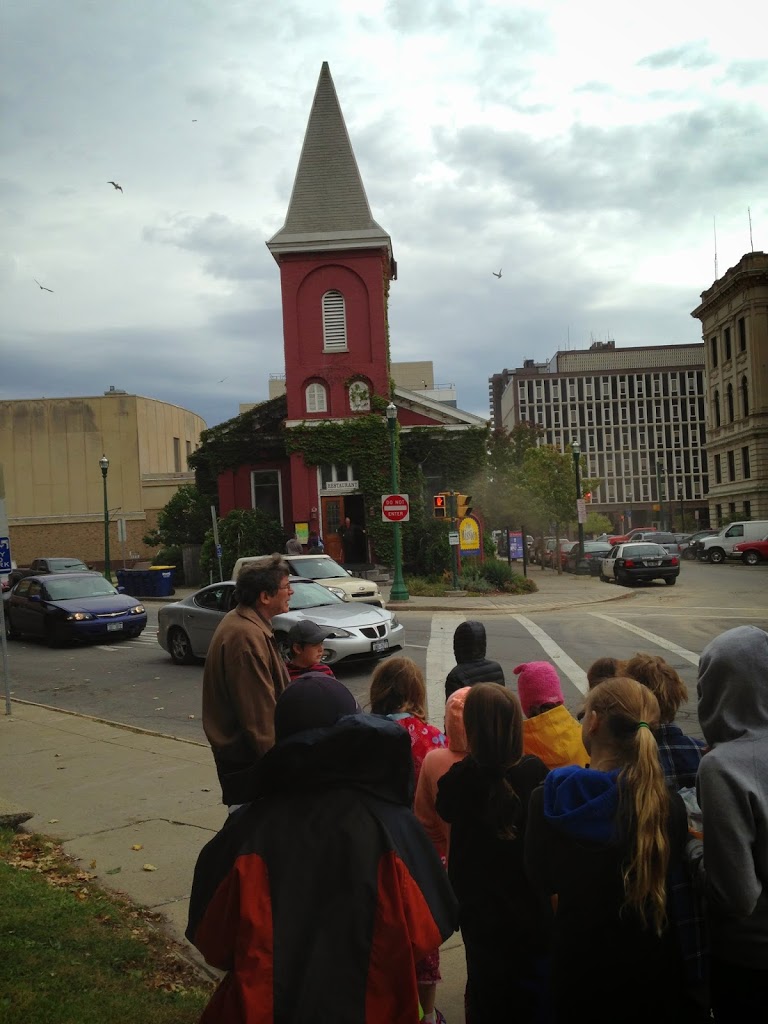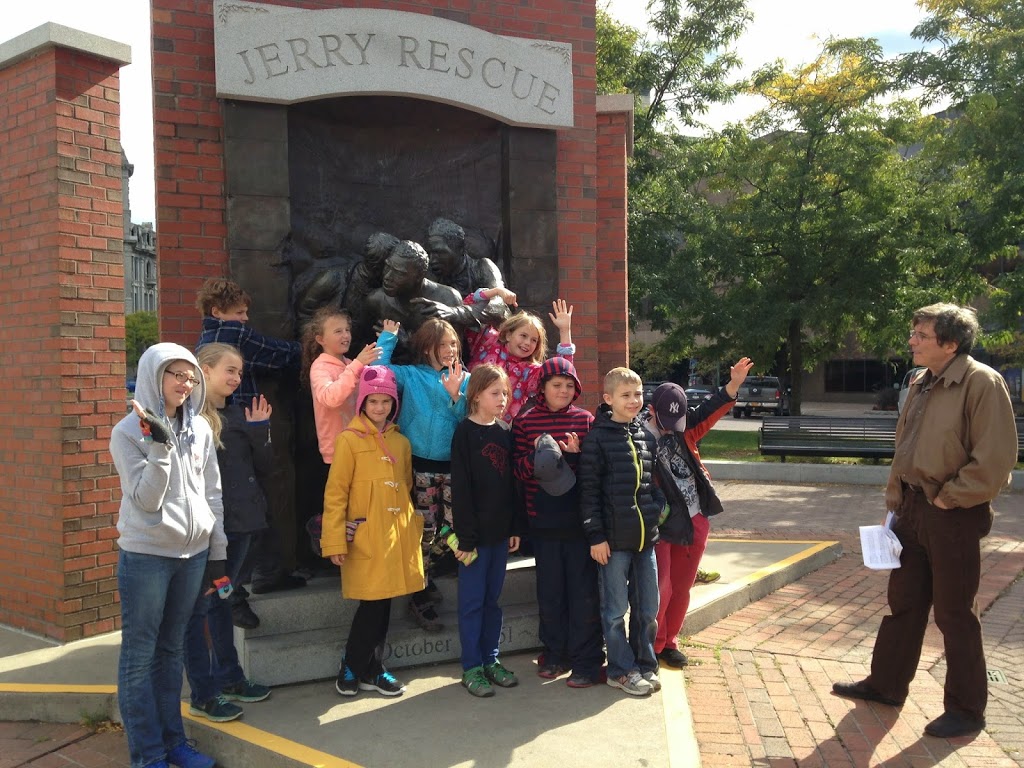 The oldest group of students are taking part in a social studies unit looking at the causes and events leading up to the Civil War. This is a continuation of the Westward Expansion unit they completed last year. They have had remarkable discussions about what freedom is, what you can own and about slavery. They have learned about the economies of the north and south and the different ways of life and beliefs that existed at this time. They created maps showing triangular trade and read a short story about The Amistad. They have currently been participating in activities learning about the abolitionist movement and the Underground Railroad.
The oldest group of students are taking part in a social studies unit looking at the causes and events leading up to the Civil War. This is a continuation of the Westward Expansion unit they completed last year. They have had remarkable discussions about what freedom is, what you can own and about slavery. They have learned about the economies of the north and south and the different ways of life and beliefs that existed at this time. They created maps showing triangular trade and read a short story about The Amistad. They have currently been participating in activities learning about the abolitionist movement and the Underground Railroad.
All the students will be taking part in a book club reading Two Tickets to Freedom, a true story of Ellen and William Craft, fugitive slaves.
To build upon their knowledge of the abolitionist movement, they took a field trip to the Onondaga Historical Society. Their day at the OHA started with a discussion about the conditions of slavery while they looked at artifacts and tools that would have been used on southern plantations. The students viewed carved faces found in the basement of The Wesleyan Methodist Church, a hideout on the Underground Railroad. Together, the students concluded that the faces were carved by fugitive slaves traveling to freedom on the Underground Railroad, although it is still unknown who exactly made the carvings.
They watched a multi-media presentation where they met life size cut outs of individuals such as Frank Wanzer, a fugitive slave who found refuge in Syracuse with local abolitionists such as the Loguen family and Gerrit Smith. They also heard from David Noxon, an anti-abolitionist. They took part in a walking tour of downtown Syracuse showing local landmarks of the Underground Railroad and abolitionist movement. The tour stopped at the Wesleyan Methodist Church (now The Mission Restaurant) where the carved faces were found. They visited the site where Fredrick Douglas first spoke in Syracuse, the location of the escape of then slave, Harriet Powell, the sites involved in The Jerry Rescue and many more historical buildings and locations.
The students then took on the roles of local abolitionists attending an anti-slavery meeting led by Samuel May (our tour guide Scott Peal). At this meeting Caroline Loguen (Toni Jones) shares the story of The Jerry Rescue and how 19 people, one including her husband Reverend Loguen, were arrested for aiding in the escape of a slave. The students, as abolitionists, shared their testimony of The Jerry Rescue and thought of ways to help Reverned Loguen and the others.
This is what the students had to say about their day at the OHA and what they learned:
“I didn’t know that Frank Wanzer existed or that the Loguen family existed. I knew about Noxon but I leaned about those two families and that the Loguen family had a safe house and Frank Wanzer was an escaped slave.” -Ace
“The Jerry Rescue sculpture was interesting. Jerry broke out and was trying to run away. He ran a few blocks and got caught again. The girl who made chocolates made more money than the president at that time.” -Neona
“The basement under the church was part of the underground railroad and the faces that were carved in the stone were found there. We are not sure if the faces are of slaves who died there.” -Nora
“I didn’t know churches could be so small. They didn’t build giant structures in that time period. I like that. Syracuse actually did something in history. Syracuse was known for salt.” -Asher
“I learned how people hid out in churches in Syracuse. That runaway slaves hid out there. Are Jayhawkers the same as abolitionists? Yes, I think so.” -Agnes
“The walking tour was really cool. There were so many places in just a couple blocks that had to do with slavery. I thought it was really cool and interesting but also sad. The faces found in the church was really interesting. That people would carve faces to show that they were there. Its cool that they were able to do that in a dark room. Some lady made chocolates with her own recipes. She sold them all over syracuse and bot bigger and bigger. As a slave she made chocolates and then she wasn’t a salve anymore and got really wealthy and had a lot of chocolate stores.” -Marina
“I learned that when slaves reached into the cotton plant to pick it they got their hands cut. I learned that Syracuse was a hot bed of abolitionists.” -Maia
“I learned that lots of things from a long time ago, that they kept them and preserved. Like the book that said that white people were better than black people and that everyone believed it. And the key from the jail that Jerry was in was cool.” -Juliette
“It was cool because we know what everything looks like now and it was cool to see what has changed and what buildings are still here. The church is still standing but it’s a restaurant now. I wish they would have kept the door to the jail so they could show that they key actually fit the door. I noticed that one of the streets we crossed was Montgomery, that reminded me of Jayhawker. They said Syracuse was a hot bed of abolitionists. There were hundreds. Obviously more than a lot of cities. I wonder if the Loguen family still lives in Syracuse.?” -Jonas
“I knew the restaurant, The Mission, was there but I didn’t know that was the same church that had slaves staying in the bottom of it. I didn’t know there were abolitionists who lived in the south.” -Jake
“The history of where we were walking is amazing. The history is somewhat bright. Like Frederick Douglas’s first anti-slavery speech in Syracuse. It’s impressive that he started out talking to 5 people and ended with 500. I wish he was still alive so I could send a letter to him. Syracuse was famous for it’s salt.” -Josh
“I didn’t know there were so many abolitionists in Syracuse. It was like they lived everywhere you looked.” -Ben
You can view all the photos of the trip to the OHA on our flickr site. https://www.flickr.com/photos/20502001@N00/
